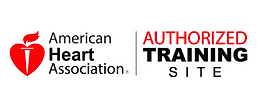In any emergency situation, especially during cardiac arrest, the speed and efficiency of care can mean the difference between life and death. That’s where the Basic Life Support (BLS) Chain of Survival comes into play. The BLS Chain of Survival is a series of critical steps that must be followed to maximize the chances of survival for someone experiencing a life-threatening emergency. At RESQ Health & Safety Training, we emphasize the importance of understanding and executing these steps correctly.
Let’s break down the BLS Chain of Survival and understand each step in the proper order:
1. Immediate Recognition of Cardiac Arrest and Activation of Emergency Response System
The first link in the BLS Chain of Survival is recognizing that someone is in cardiac arrest. Cardiac arrest is often sudden and unexpected, but it can be recognized by the sudden loss of consciousness, lack of responsiveness, and absence of normal breathing. Once cardiac arrest is identified, the next critical step is to activate the emergency response system immediately. This typically involves calling 911 or your local emergency number to get professional help on the way as quickly as possible.
2. Early CPR with an Emphasis on Chest Compressions
Once you’ve recognized cardiac arrest and called for help, the next step is to begin CPR immediately. Early CPR, particularly high-quality chest compressions, is crucial for maintaining blood flow to the brain and vital organs. The compressions should be deep, fast, and uninterrupted until emergency responders arrive. Every second counts, and performing CPR right away can double or even triple the chances of survival.
3. Rapid Defibrillation
The third link in the chain involves the use of an Automated External Defibrillator (AED). Defibrillation is the process of delivering a controlled electric shock to the heart to restore its normal rhythm. AEDs are designed to be user-friendly, even for those with no medical training, and can be found in many public places. Applying an AED as quickly as possible after the onset of cardiac arrest is essential, as every minute without defibrillation reduces the chance of survival by 7-10%.
4. Advanced Resuscitation by Emergency Medical Services
Once emergency responders arrive, they take over care with advanced resuscitation techniques. This can include advanced airway management, administration of medications, and other life-saving procedures that go beyond basic CPR. The goal is to stabilize the patient and prepare for transport to a medical facility where they can receive further treatment.
5. Post-Cardiac Arrest Care
The final link in the BLS Chain of Survival is post-cardiac arrest care. Even after the heart has been restarted, the patient needs intensive care to prevent further complications and improve outcomes. This may involve therapeutic hypothermia (cooling the body to reduce brain damage), careful monitoring, and other medical interventions to ensure the best possible recovery.
Why Is the BLS Chain of Survival Important?
Every step in the BLS Chain of Survival is designed to improve the chances of survival and recovery from cardiac arrest. Missing or delaying even one step can significantly reduce the likelihood of a positive outcome. By understanding and following these steps, bystanders and first responders can work together to give the victim the best possible chance of survival.
At RESQ Health & Safety Training, we are committed to providing high-quality BLS training that empowers individuals and teams to respond effectively in emergencies. Whether you’re a healthcare provider, an employer, or simply someone who wants to be prepared, knowing the BLS Chain of Survival is a vital part of being ready to save a life.
Ready to learn more or schedule your BLS training? Visit RESQ Health & Safety Training to explore our course offerings and ensure you’re equipped to act when it matters most.
Contact Information:
Phone: 317-786-7260
Email: info@ResqTraining.com
Location: 5142 Madison Ave., Suite 4. Indianapolis, IN 46227



